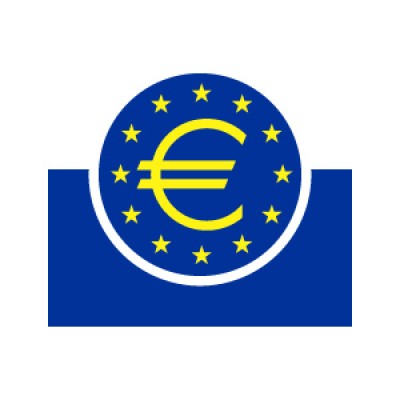The European Central Bank's Rate Cut: A Double-Edged Sword for Europe
June 6, 2025, 9:42 pm

Location: United Kingdom, England, City of London
Employees: 10001+
Total raised: $2.9B
The European Central Bank (ECB) is poised to cut interest rates. This move, expected to lower the deposit facility rate to 2%, is a response to a tepid economic landscape. It’s a calculated risk, akin to a tightrope walker balancing on a thin line. The stakes are high, and the outcome uncertain.
The ECB's decision comes amidst a backdrop of mixed economic signals. Inflation has cooled, hovering around the central bank's target of 2%. Recent data revealed a modest 1.9% rise in consumer prices for May. This is a welcome relief, but growth remains sluggish. The eurozone's GDP grew by just 0.3% in the first quarter of 2025. It’s like a car sputtering along a bumpy road, struggling to gain speed.
Analysts are predicting further cuts later this year. The market is buzzing with expectations. A 25-basis-point cut is almost a certainty, with a 99% probability according to LSEG data. Yet, uncertainty looms. The ECB's future moves are clouded by external factors, particularly U.S. trade policies. President Trump’s tariffs are casting a long shadow over European growth. The potential for retaliatory measures from the EU adds another layer of complexity.
The ECB's upcoming meeting is crucial. It will not only announce the rate cut but also release its latest economic projections. These projections will shed light on inflation and growth expectations. The Organisation for Economic Co-operation and Development (OECD) forecasts a 1% growth rate and 2.2% inflation for the euro area this year. This paints a picture of a region grappling with growth challenges.
For consumers, the implications of a rate cut are significant. Borrowing costs are likely to decrease, making loans cheaper. However, the impact varies depending on the type of financial products held. Short-term deposits will likely see immediate effects, while long-term fixed rates may not shift as quickly. It’s a complex dance between current rates and future expectations.
Banks will adjust their rates in response to the ECB's decision. A cut in the deposit rate means banks will earn less on their reserves. This could lead to lower interest rates on savings accounts. For consumers, this means less return on their savings. It’s a double-edged sword; while borrowing becomes cheaper, saving yields diminish.
The ECB's cautious approach is evident. Analysts suggest the bank will maintain flexibility in its policy decisions. A meeting-by-meeting strategy allows the ECB to adapt to changing economic conditions. This approach is akin to a chess player carefully considering each move, weighing risks and rewards.
The broader European market is reacting to these developments. Shares of British fintech firm Wise surged by 8.4% after announcing a shift in its primary listing to New York. This move signals a growing trend of companies seeking more favorable conditions outside of Europe. The London Stock Exchange faces increasing competition from U.S. markets, and this shift could be a harbinger of more to come.
Meanwhile, European stocks are trading slightly higher as investors anticipate the ECB's decision. The pan-European Stoxx 600 has gained around 0.1%. However, gains are muted, reflecting cautious optimism. Investors are aware of the economic headwinds, particularly from the U.S. trade landscape.
Germany's factory orders rose by 0.6% in April, defying expectations of a decline. This is a glimmer of hope in an otherwise uncertain economic environment. The increase was driven by a surge in manufacturing, particularly in data processing equipment and electrical goods. It’s a reminder that pockets of strength still exist within the eurozone.
As the ECB prepares to announce its decision, the focus remains on how these rate cuts will affect the broader economy. Will they stimulate growth, or will they merely delay the inevitable? The answer is as elusive as a mirage in the desert.
In conclusion, the ECB's anticipated rate cut is a pivotal moment for Europe. It’s a balancing act, with potential benefits and risks. The central bank must navigate a complex landscape, where external pressures and internal challenges collide. As consumers and investors await the outcome, one thing is clear: the road ahead is fraught with uncertainty. The ECB's next steps will be closely watched, as they hold the key to unlocking Europe’s economic potential—or further entrenching its struggles.
The ECB's decision comes amidst a backdrop of mixed economic signals. Inflation has cooled, hovering around the central bank's target of 2%. Recent data revealed a modest 1.9% rise in consumer prices for May. This is a welcome relief, but growth remains sluggish. The eurozone's GDP grew by just 0.3% in the first quarter of 2025. It’s like a car sputtering along a bumpy road, struggling to gain speed.
Analysts are predicting further cuts later this year. The market is buzzing with expectations. A 25-basis-point cut is almost a certainty, with a 99% probability according to LSEG data. Yet, uncertainty looms. The ECB's future moves are clouded by external factors, particularly U.S. trade policies. President Trump’s tariffs are casting a long shadow over European growth. The potential for retaliatory measures from the EU adds another layer of complexity.
The ECB's upcoming meeting is crucial. It will not only announce the rate cut but also release its latest economic projections. These projections will shed light on inflation and growth expectations. The Organisation for Economic Co-operation and Development (OECD) forecasts a 1% growth rate and 2.2% inflation for the euro area this year. This paints a picture of a region grappling with growth challenges.
For consumers, the implications of a rate cut are significant. Borrowing costs are likely to decrease, making loans cheaper. However, the impact varies depending on the type of financial products held. Short-term deposits will likely see immediate effects, while long-term fixed rates may not shift as quickly. It’s a complex dance between current rates and future expectations.
Banks will adjust their rates in response to the ECB's decision. A cut in the deposit rate means banks will earn less on their reserves. This could lead to lower interest rates on savings accounts. For consumers, this means less return on their savings. It’s a double-edged sword; while borrowing becomes cheaper, saving yields diminish.
The ECB's cautious approach is evident. Analysts suggest the bank will maintain flexibility in its policy decisions. A meeting-by-meeting strategy allows the ECB to adapt to changing economic conditions. This approach is akin to a chess player carefully considering each move, weighing risks and rewards.
The broader European market is reacting to these developments. Shares of British fintech firm Wise surged by 8.4% after announcing a shift in its primary listing to New York. This move signals a growing trend of companies seeking more favorable conditions outside of Europe. The London Stock Exchange faces increasing competition from U.S. markets, and this shift could be a harbinger of more to come.
Meanwhile, European stocks are trading slightly higher as investors anticipate the ECB's decision. The pan-European Stoxx 600 has gained around 0.1%. However, gains are muted, reflecting cautious optimism. Investors are aware of the economic headwinds, particularly from the U.S. trade landscape.
Germany's factory orders rose by 0.6% in April, defying expectations of a decline. This is a glimmer of hope in an otherwise uncertain economic environment. The increase was driven by a surge in manufacturing, particularly in data processing equipment and electrical goods. It’s a reminder that pockets of strength still exist within the eurozone.
As the ECB prepares to announce its decision, the focus remains on how these rate cuts will affect the broader economy. Will they stimulate growth, or will they merely delay the inevitable? The answer is as elusive as a mirage in the desert.
In conclusion, the ECB's anticipated rate cut is a pivotal moment for Europe. It’s a balancing act, with potential benefits and risks. The central bank must navigate a complex landscape, where external pressures and internal challenges collide. As consumers and investors await the outcome, one thing is clear: the road ahead is fraught with uncertainty. The ECB's next steps will be closely watched, as they hold the key to unlocking Europe’s economic potential—or further entrenching its struggles.
